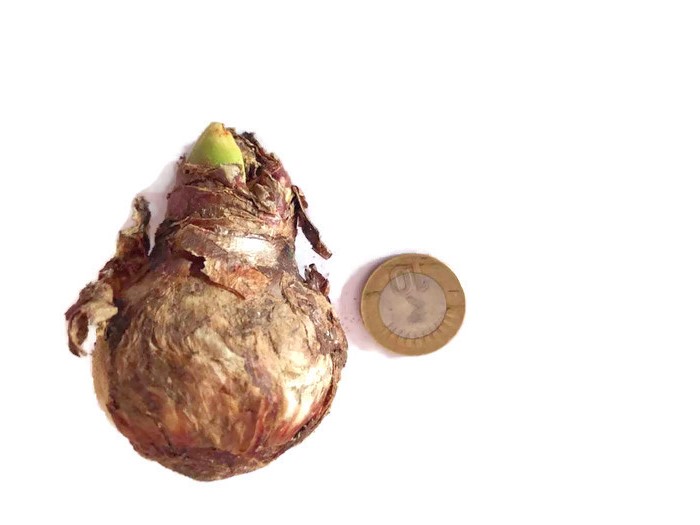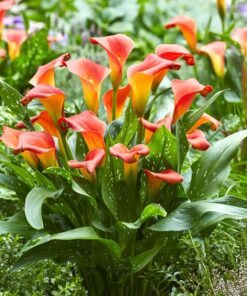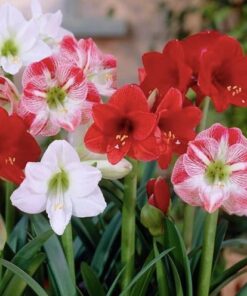Amaryllis Dutch flower bulbs Mix color 5 bulbs
₹199.00
Out of stock
Email when stock available
Amaryllis Dutch flower bulbs are bulbs of the genus Hippeastrum that are native to tropical and subtropical areas of the Americas.
Some species grow in rock crevices in savannas that have distinct dry and wet seasons; others grow in high plateau regions that have cool weather for most of the year.
Bulbs are mix , we exactly don’t know which color will give which color.
Common name: Hippeastrum
Color: The usual color is white with crimson veins, but pink or purple also occur naturally.
Bloom time: Late December until the end of June.
Height: 24 in/60 cm.
Difficulty level: Easy
Planting & Care
Amaryllis Dutch flower bulbs like their soil rich, but exceptionally well-drained, so ideally create a mix from one part well-rotted manure, one part horticultural grit or sand, and two parts leaf mould. Two-thirds good compost mixed with one-third grit also does fine.
Sunlight: Full sun
Soil: Well-drained soil.
Water: Keep soil moist throughout the growing season.
Temprature: 20°C
Fertilizer: Apply any organic fertilizer.
Amaryllis Dutch flower bulbs Harvesting: After the amaryllis has stopped flowering, it can be made to flower again. Cut the old flowers from the stem after flowering, and when the stem starts to sag, cut it back to the top of the bulb. Continue to water and fertilize as normal all summer, or for at least 5-6 months, allowing the leaves to fully develop and grow.
When the leaves begin to yellow, which normally occurs in the early fall, cut the leaves back to about 2 inches from the top of the bulb and remove the bulb from the soil. Clean the bulb and place it in a cool (40-50 deg. F), dark place such as the crisper of your refrigerator for a minimum of 6 weeks. Caution: Do not store amaryllis bulbs in a refrigerator that contains apples, this will sterilize the bulbs. Store the bulbs for a minimum of 6 weeks.
Amaryllis Dutch flower bulbs Care:
- Once the plant is flowering, continue the watering and keep it out of direct sunlight.
- Each individual flower should last two or even three weeks before they brown.
- As each one fades, cut it off at the top of the stalk and then when the whole stalk is over and begins to sag, carefully cut it off just above the bulb nose.
- After flowering you can keep them from one year to the next.
- Feeding needs to continue and you want to water too, until the leaves begin to yellow in late summer/early autumn.
- At this stage, cut the leaves back to about 6cm (2½in) from the top of the bulb and remove it from the pot.
- Keep the bulb cool (5-10°C) and dark, to give it a dormant period for 8 weeks.
- before you can encourage it to come into leaf and flower again.
- Don t re-pot it for the first couple of years; it hates root disturbance.
- The older and bigger the bulb, the more flowering stems you’ll get.
- Bulbs older than two years will produce offset bulblets.
| Color | Mix |
|---|---|
| Germination Level | Easy |
| Growth Pattern | Leaf without stem |
| Hybrid or Open Pollinated | Op |
| Ideal location | Full sun |
| Origin Country | India |
Be the first to review “Amaryllis Dutch flower bulbs Mix color 5 bulbs” Cancel reply
You must be logged in to post a review.


















Reviews
There are no reviews yet.